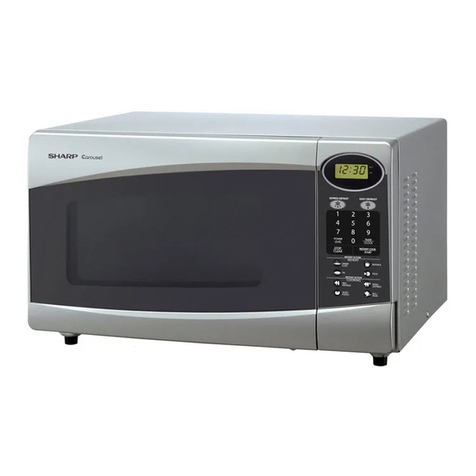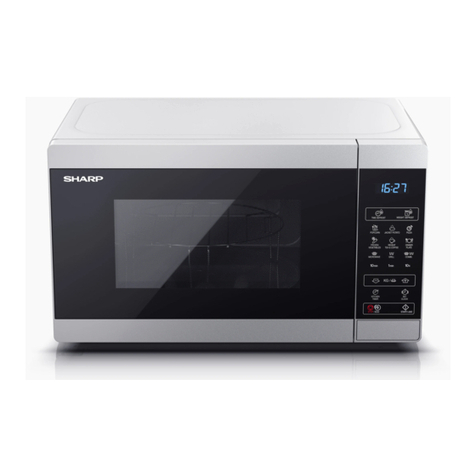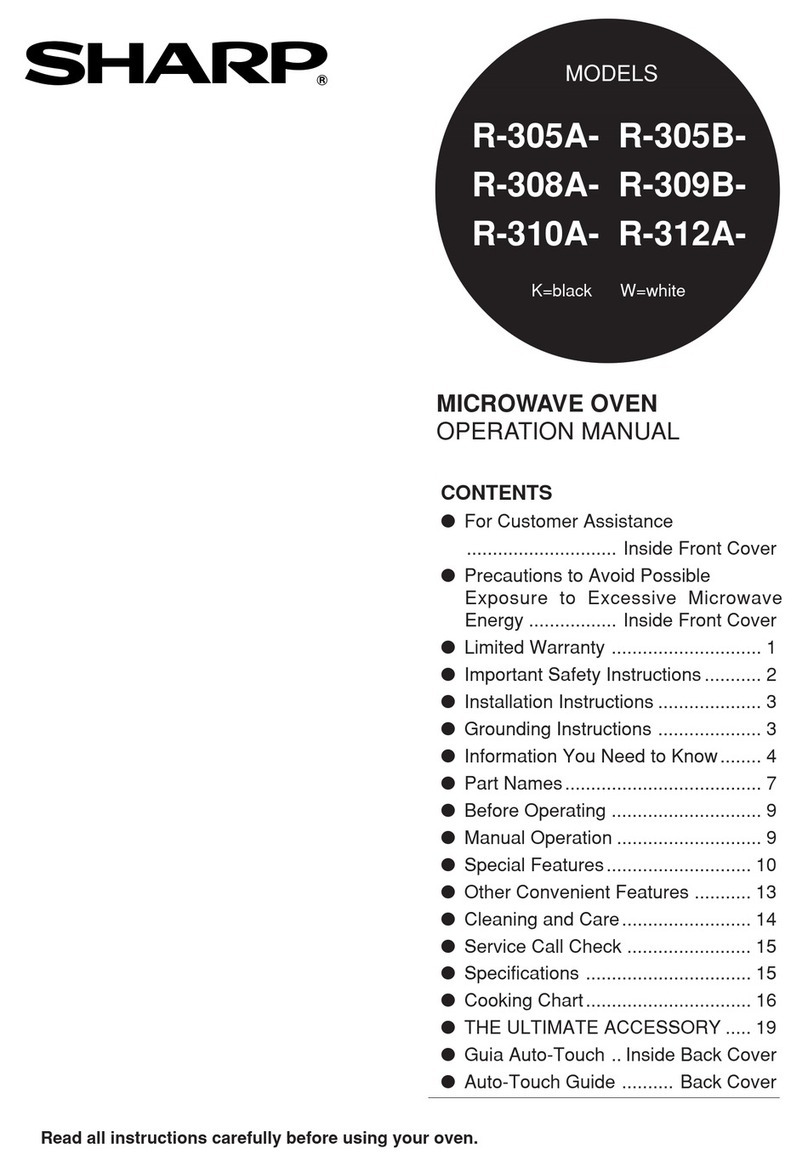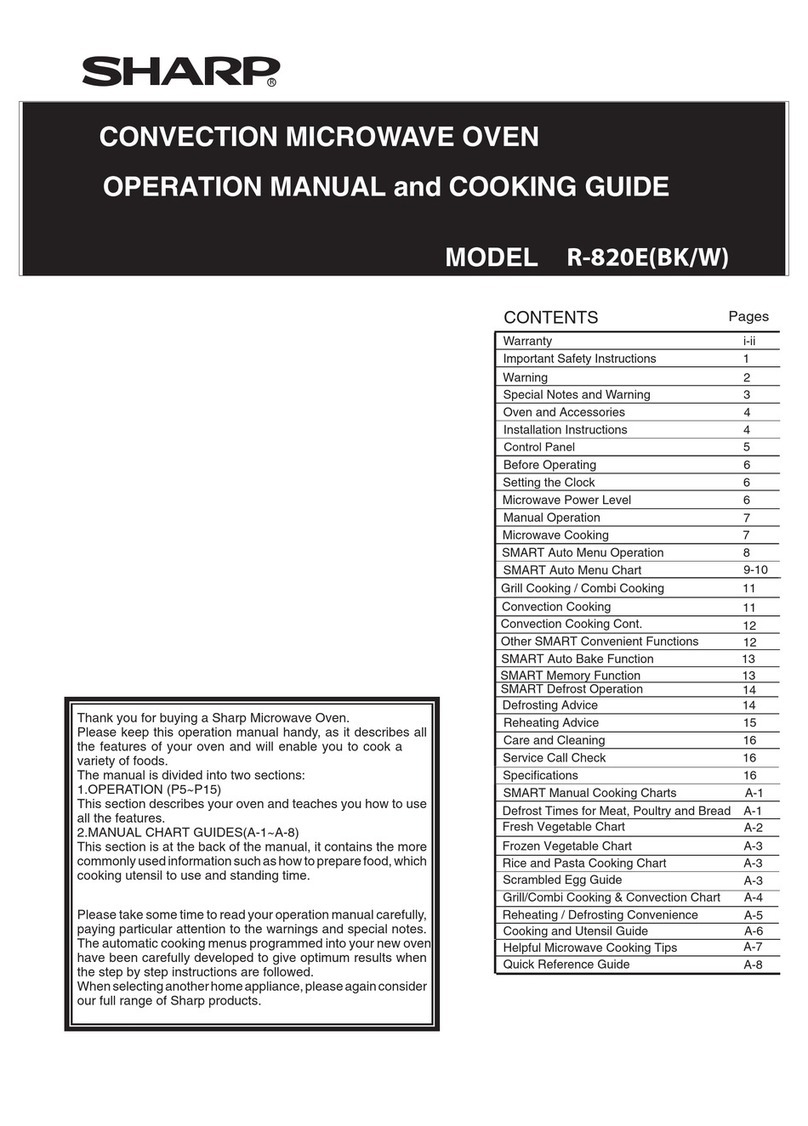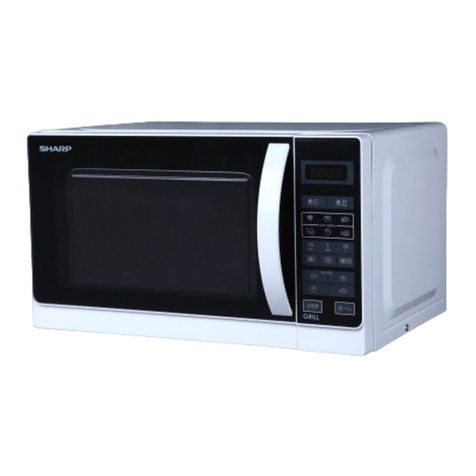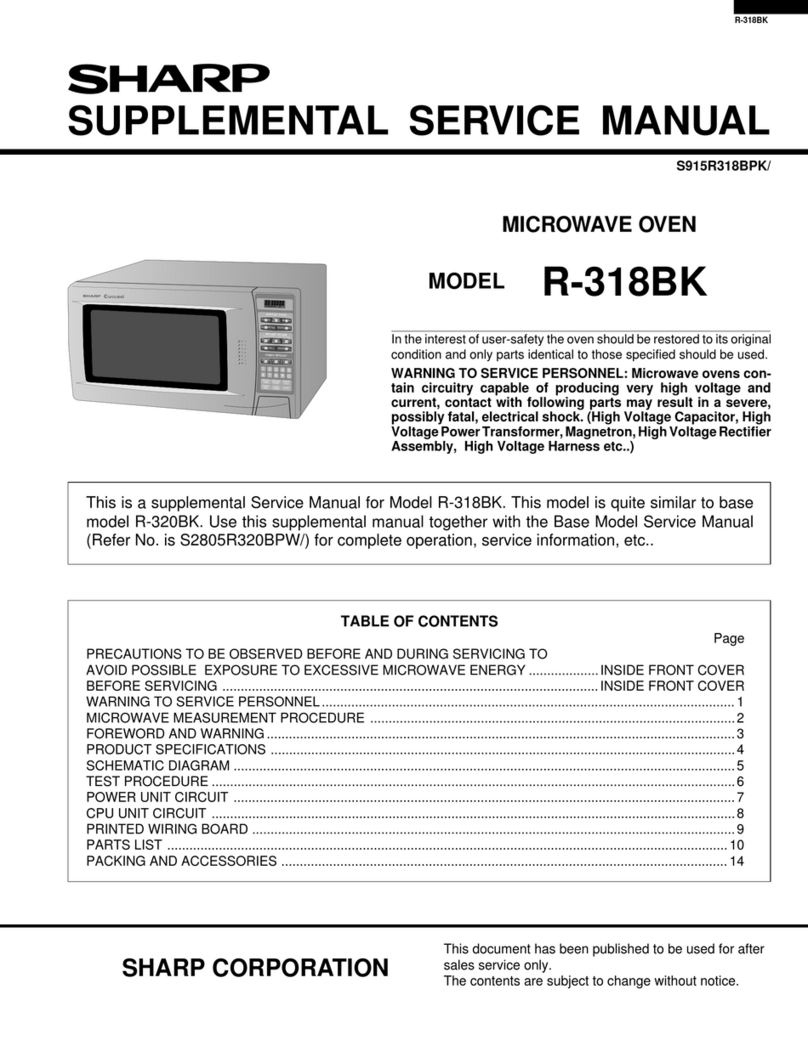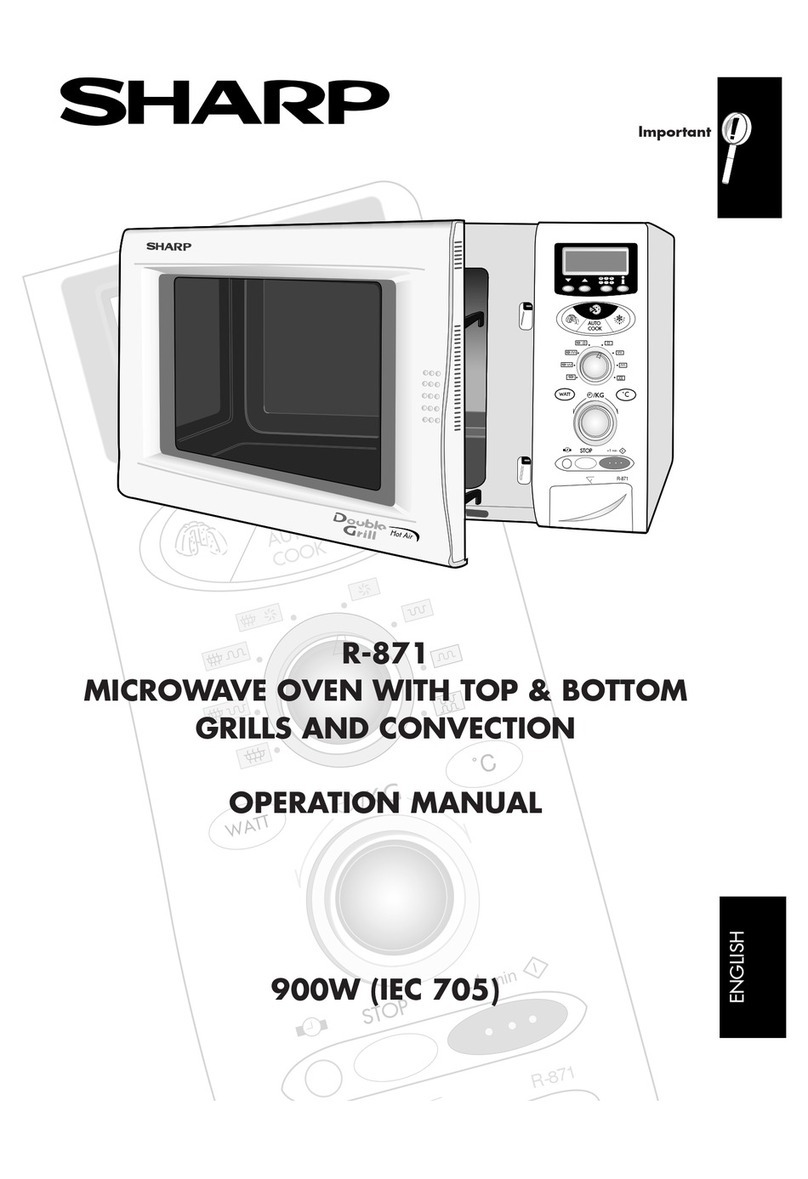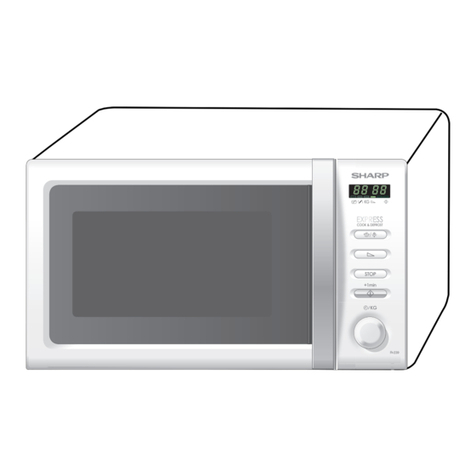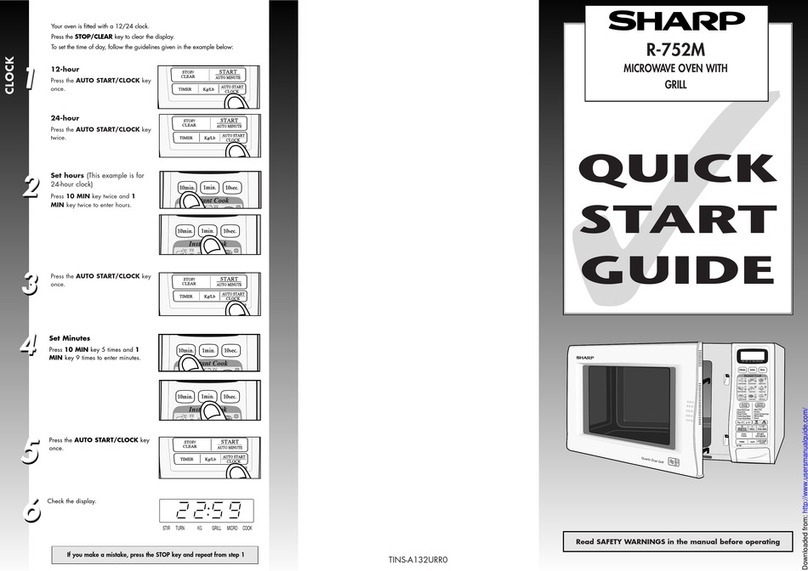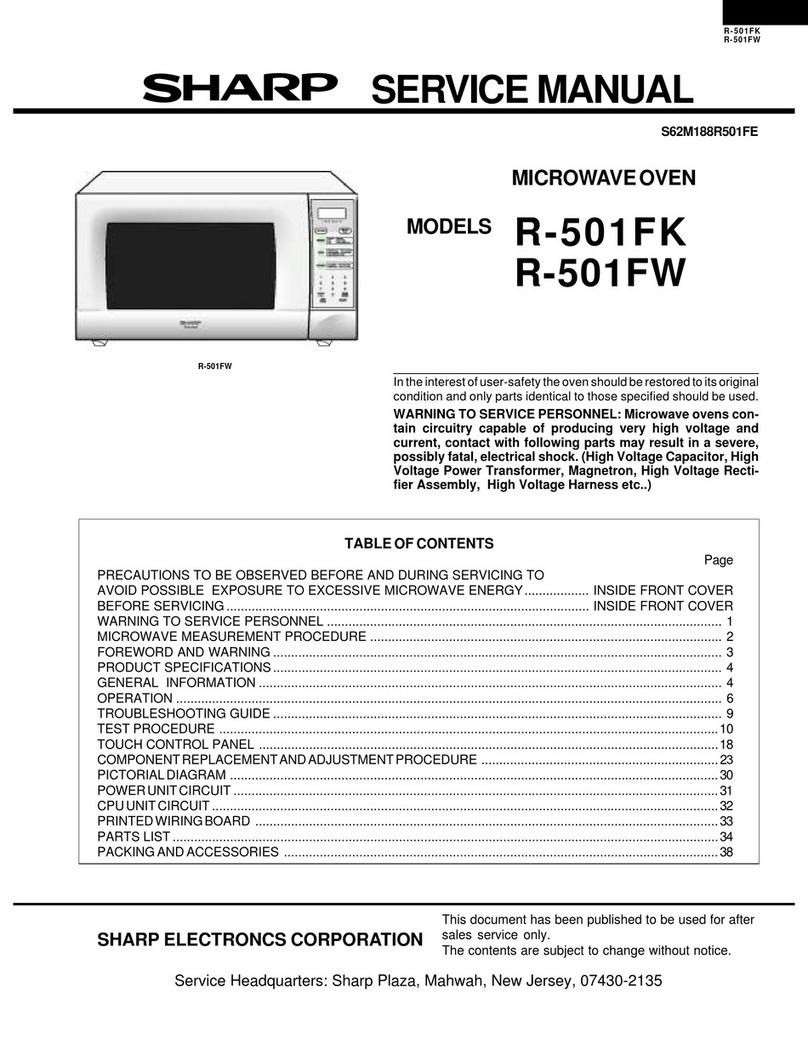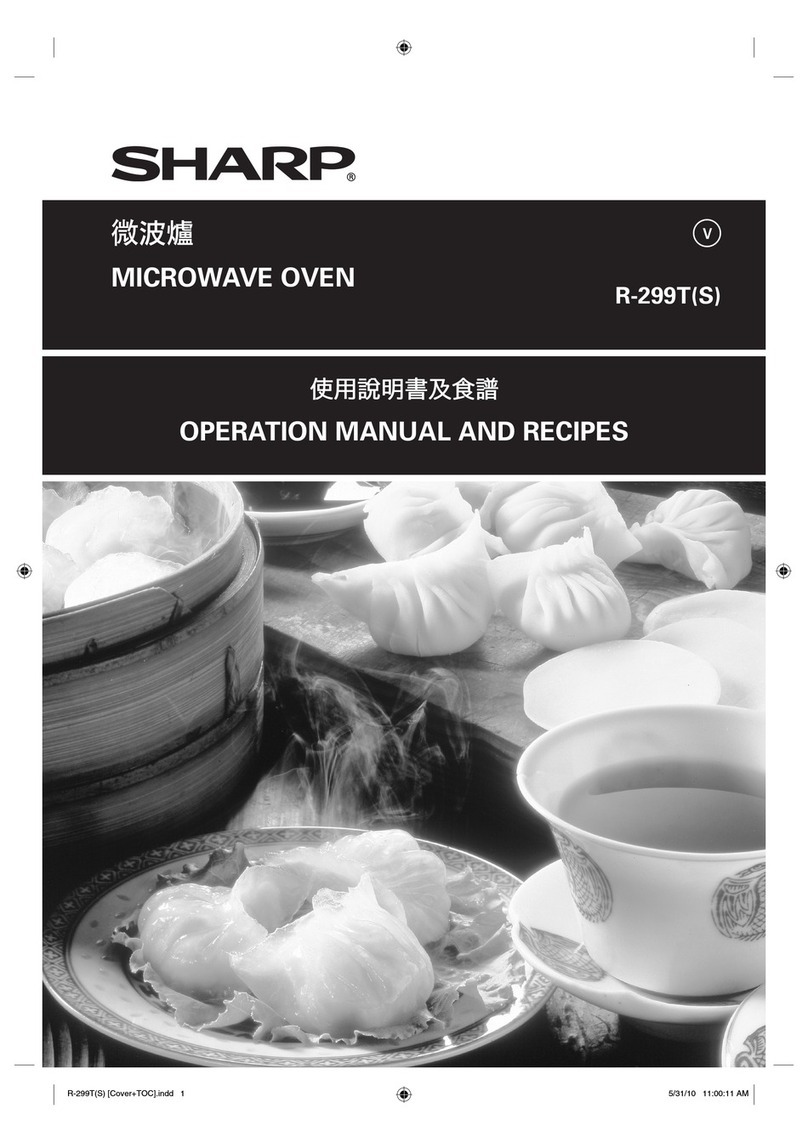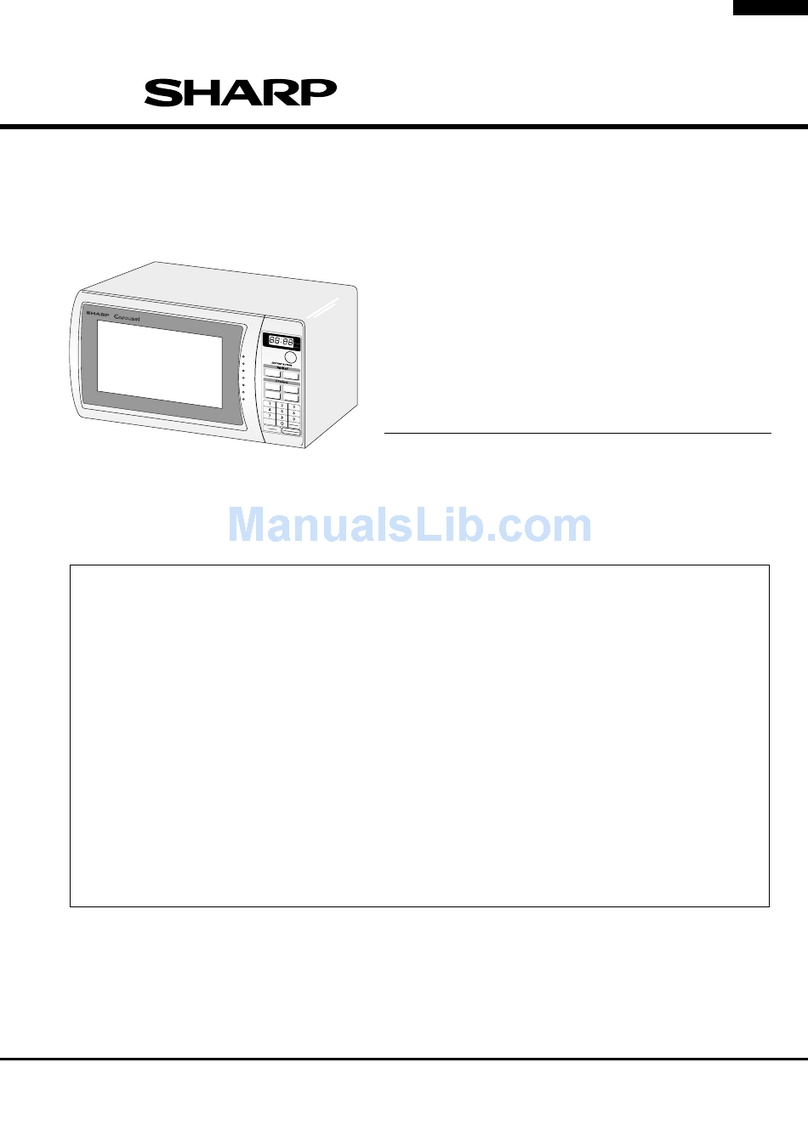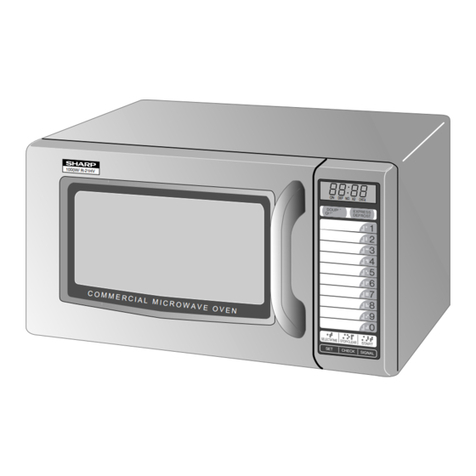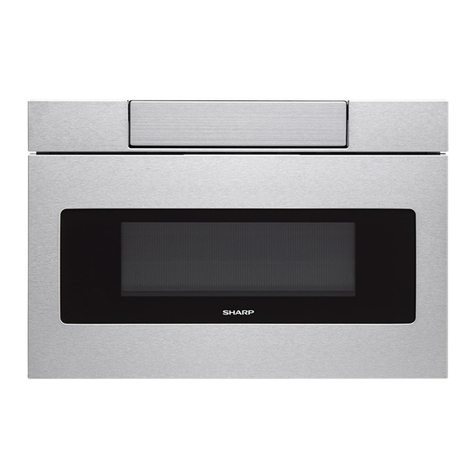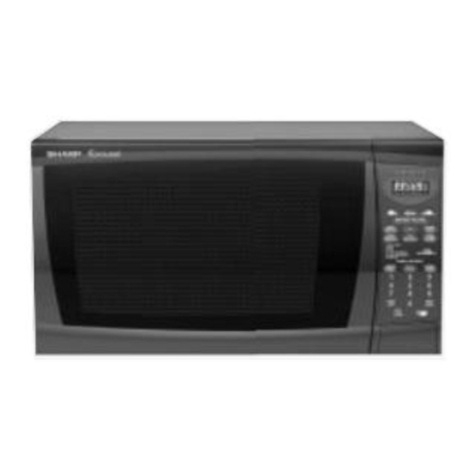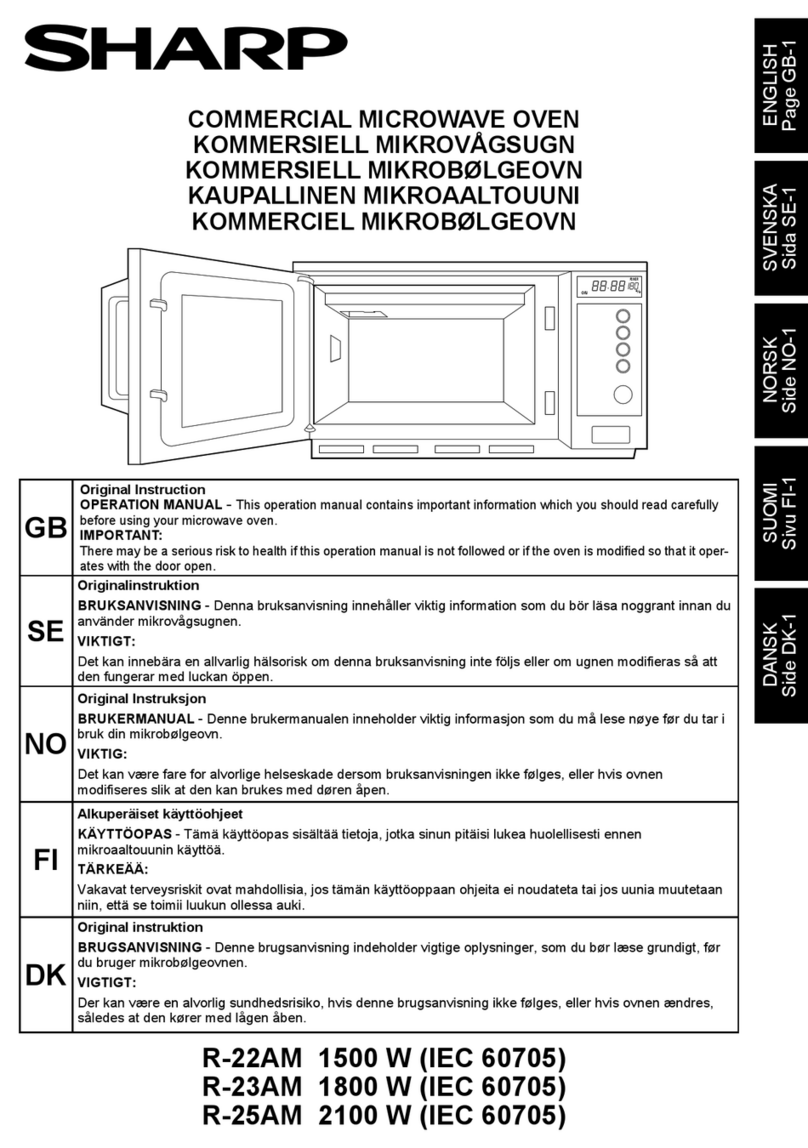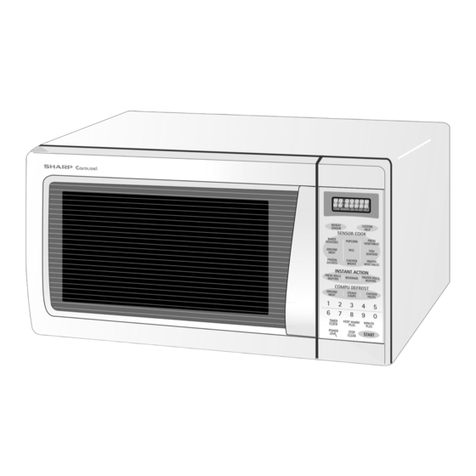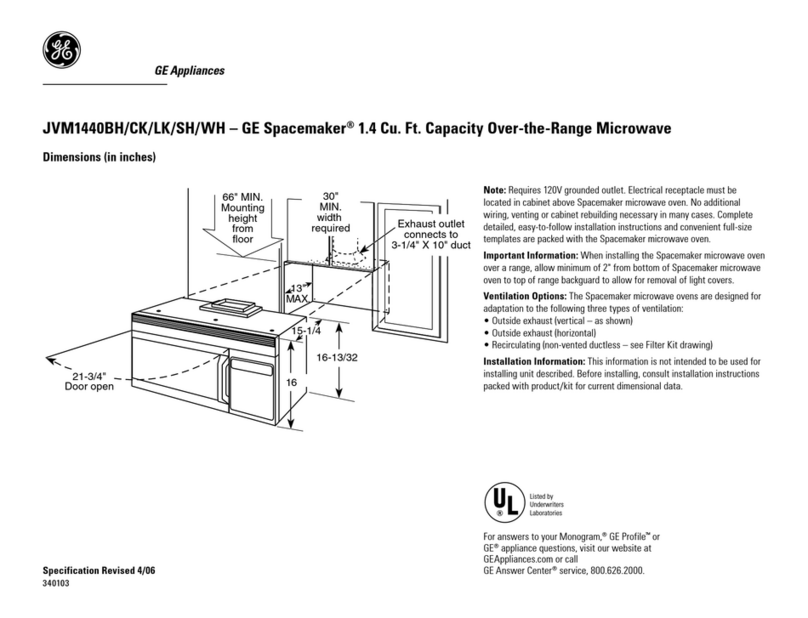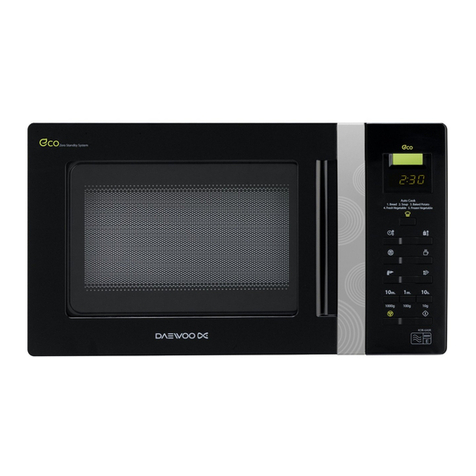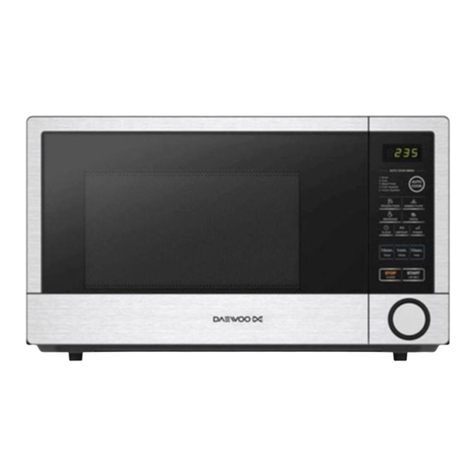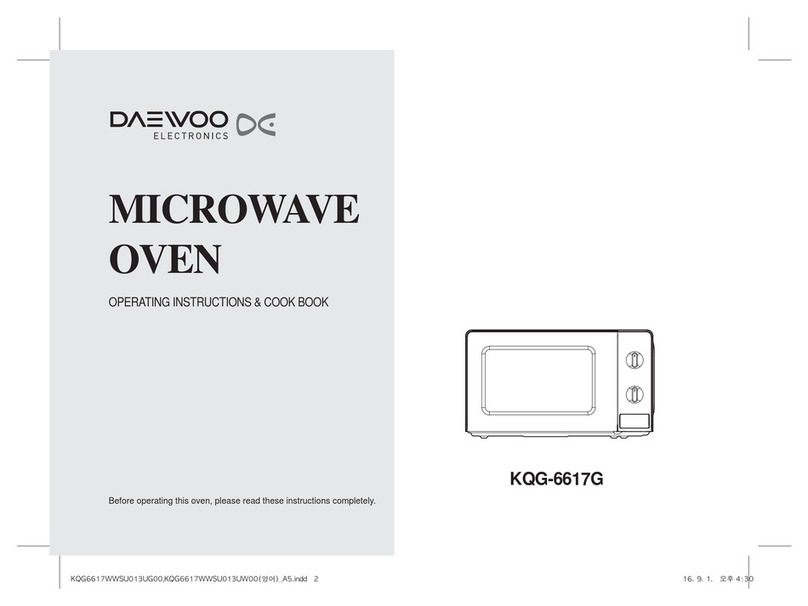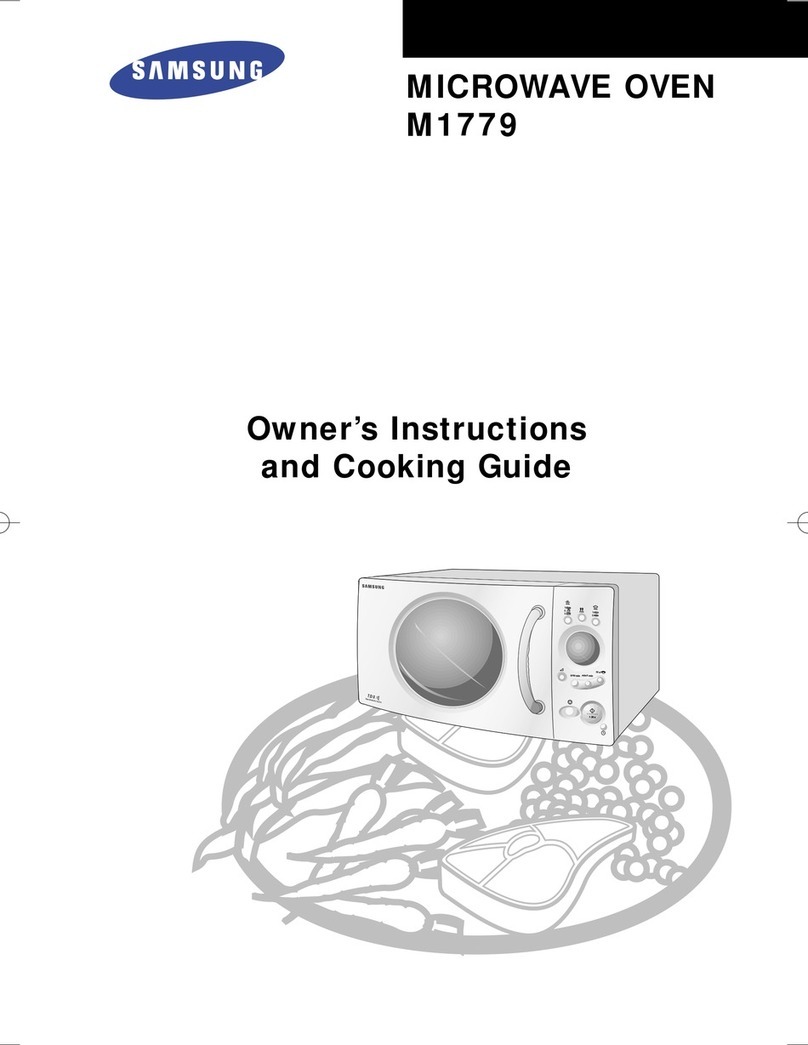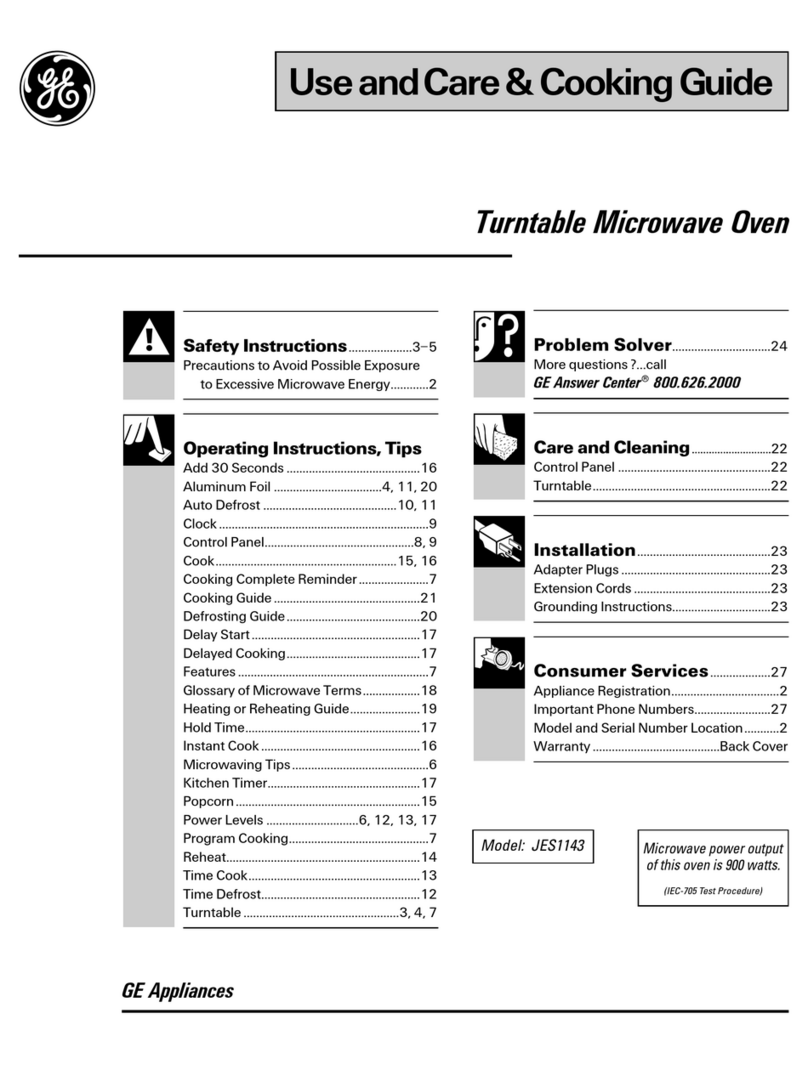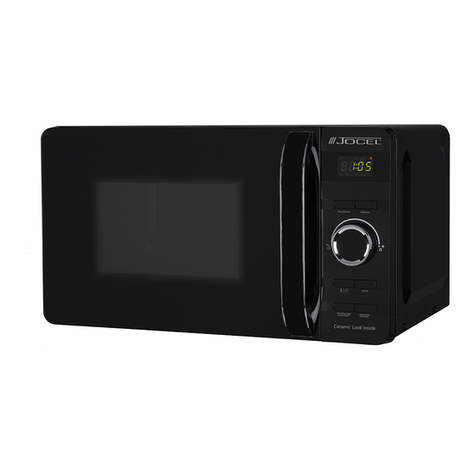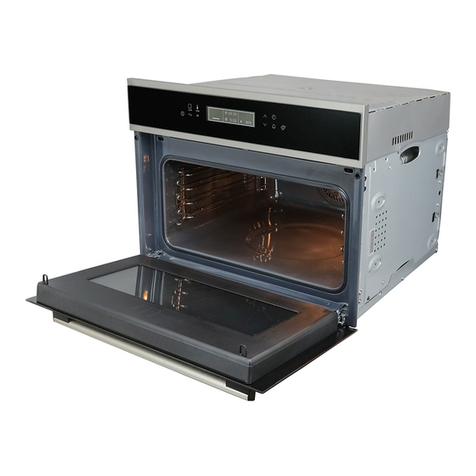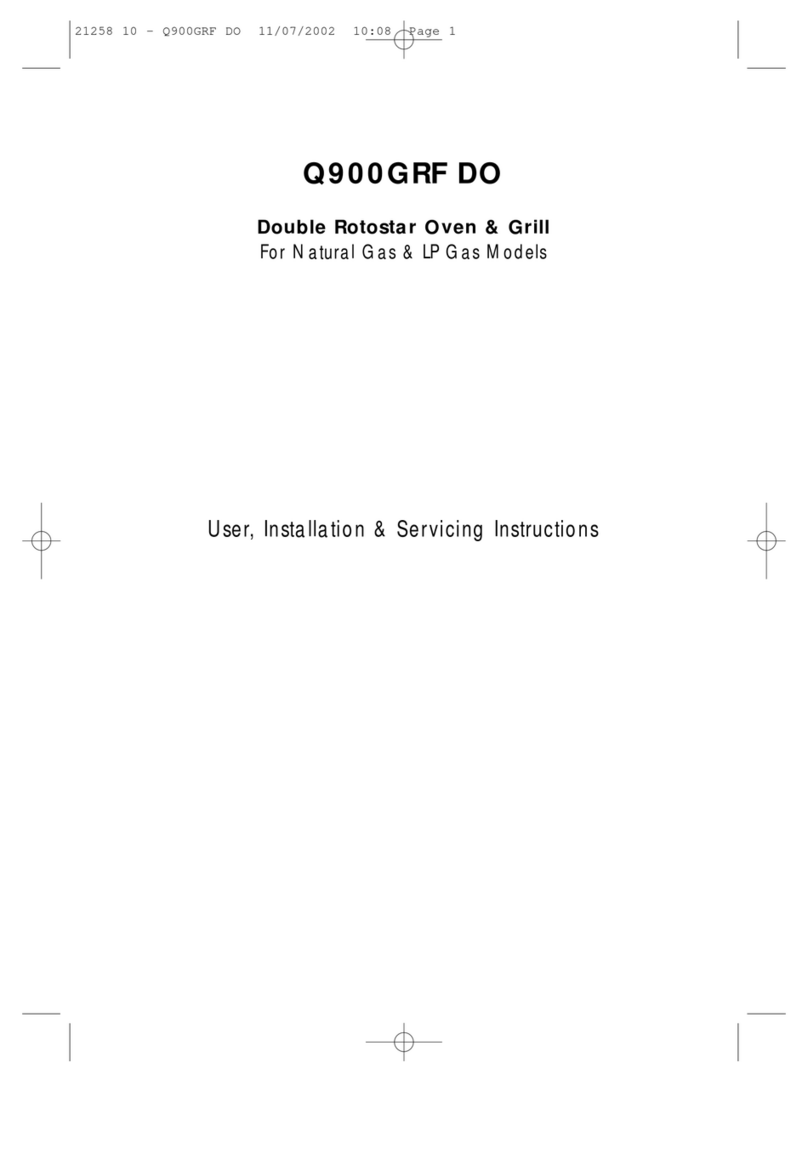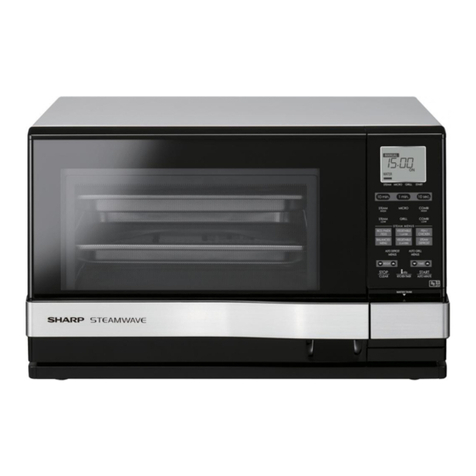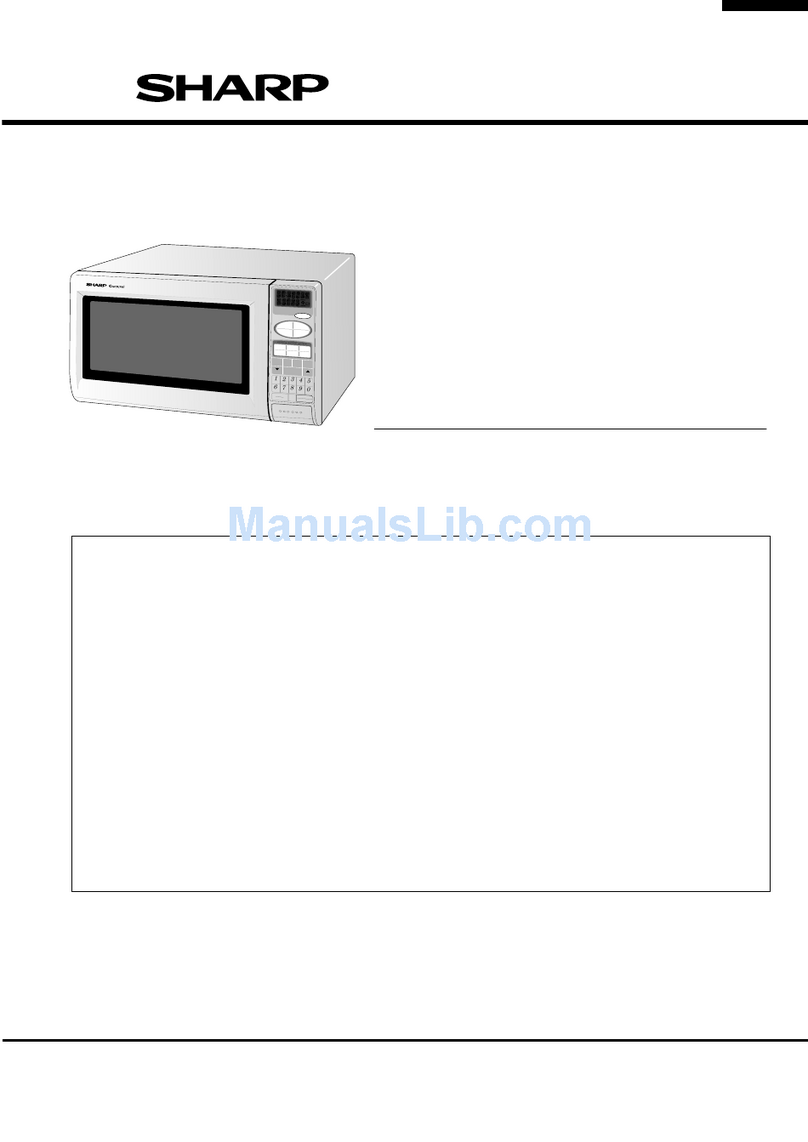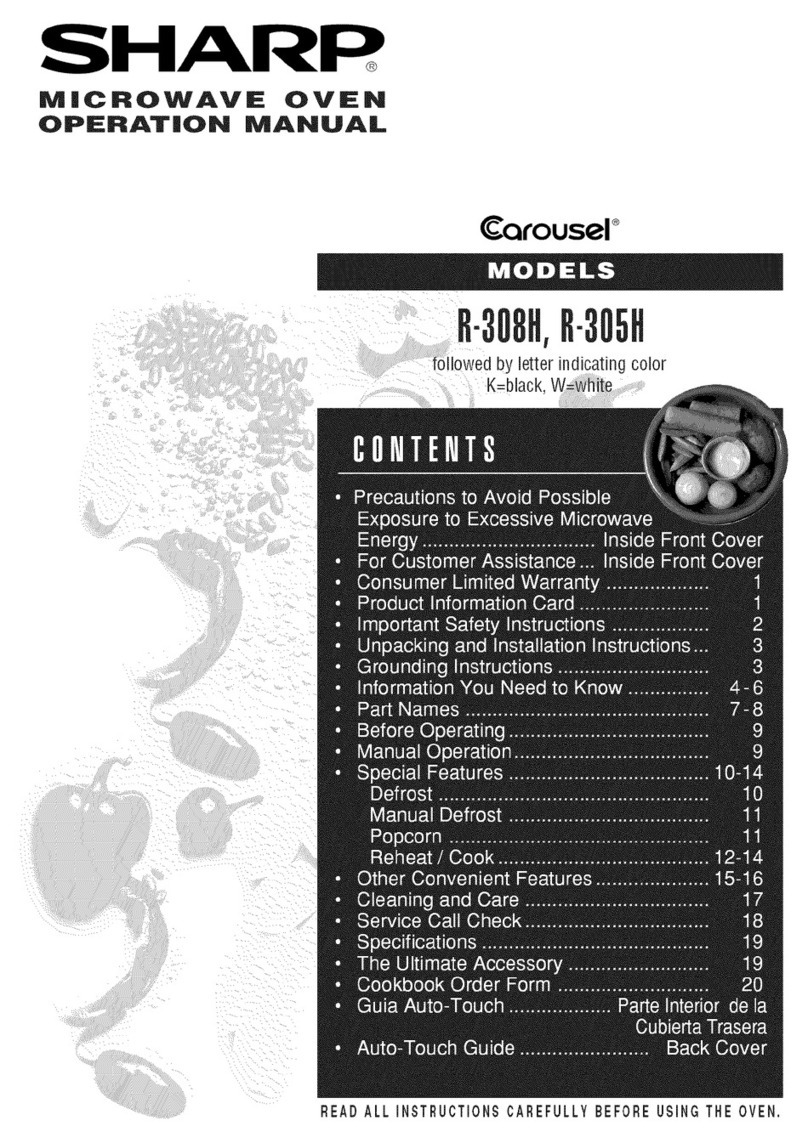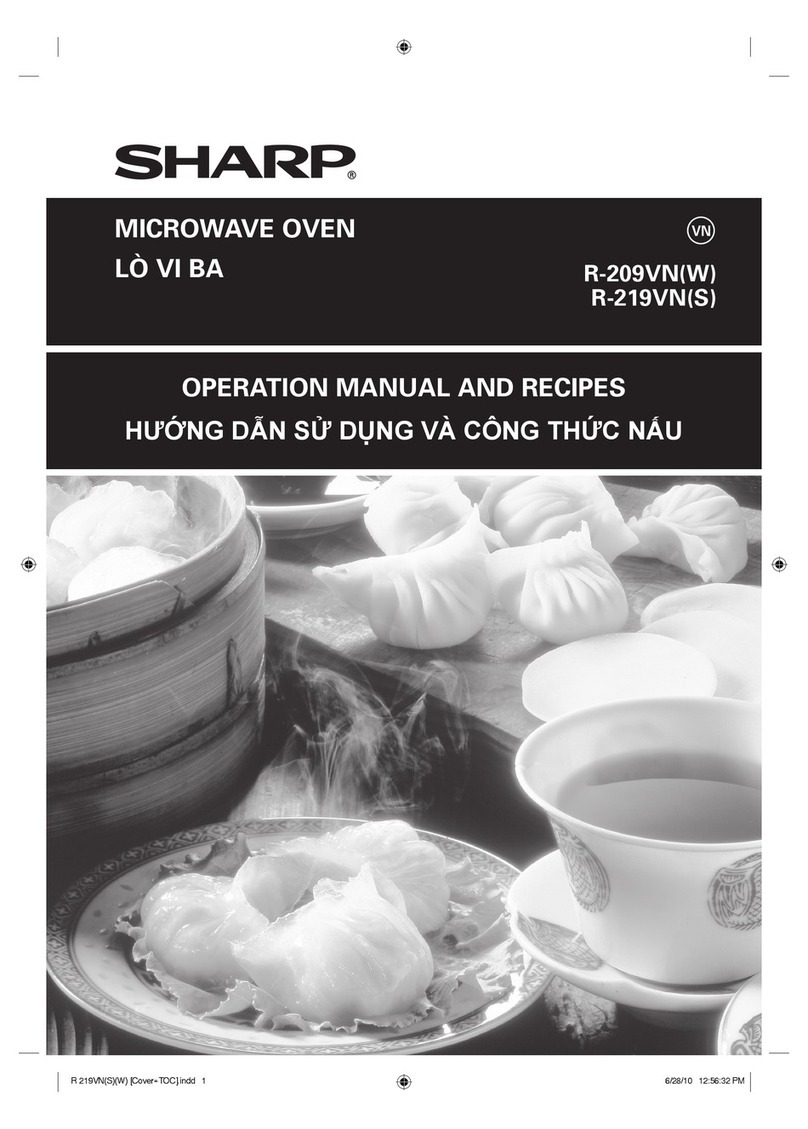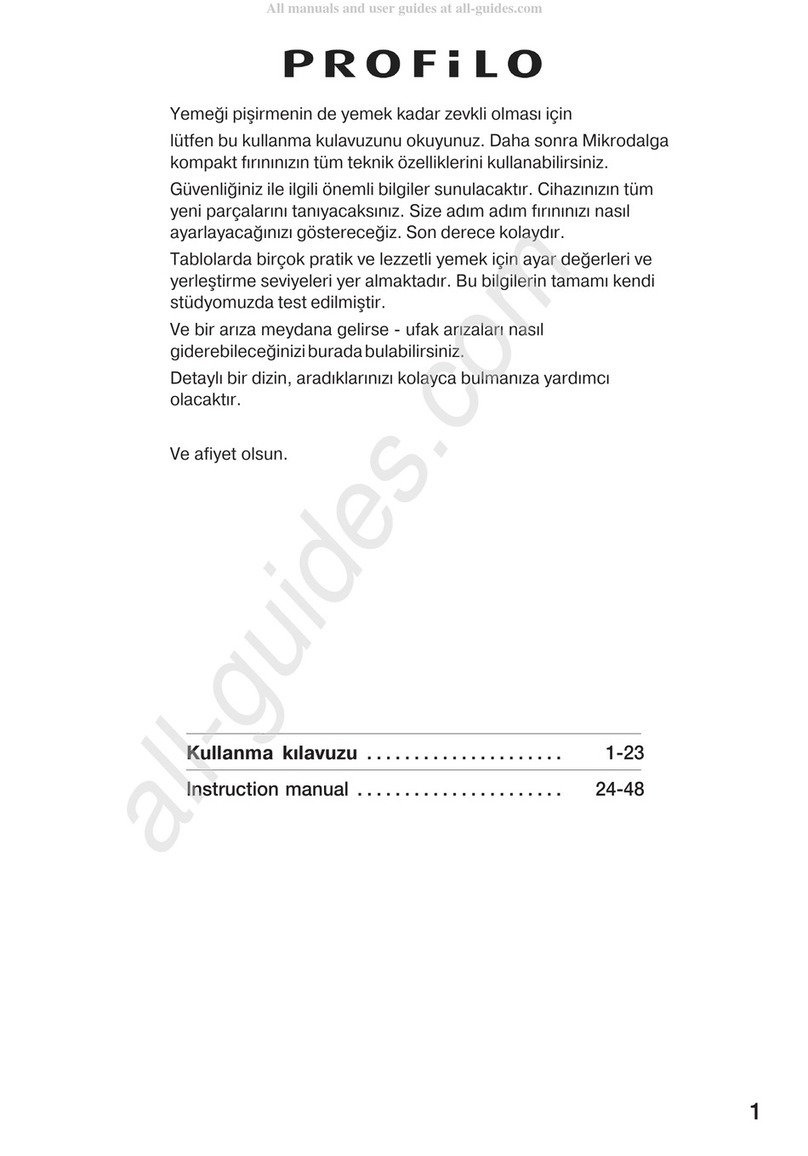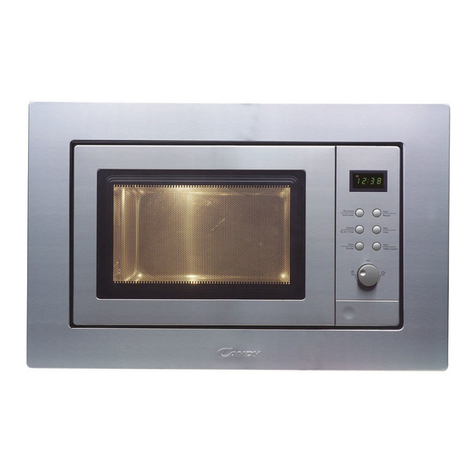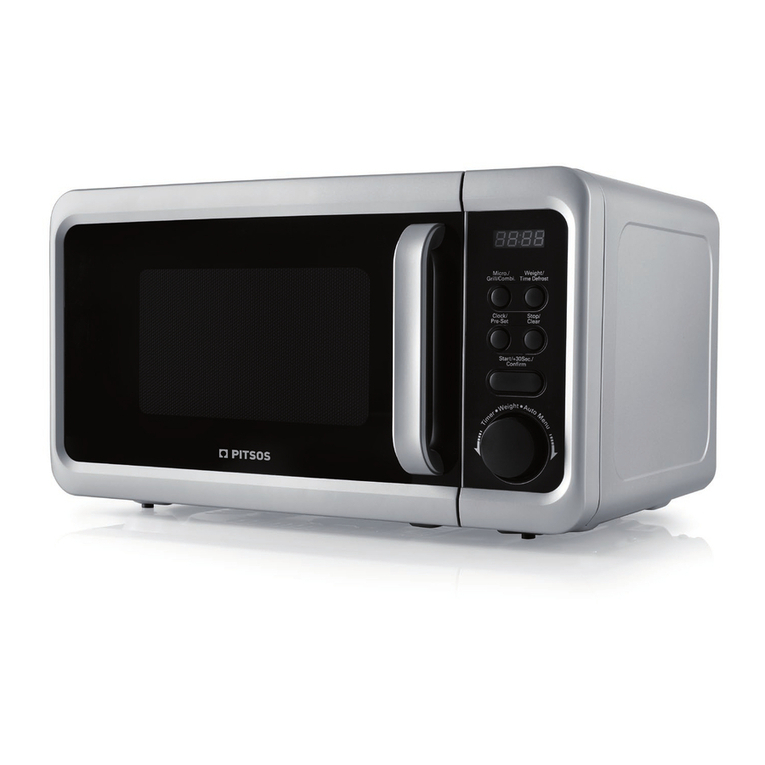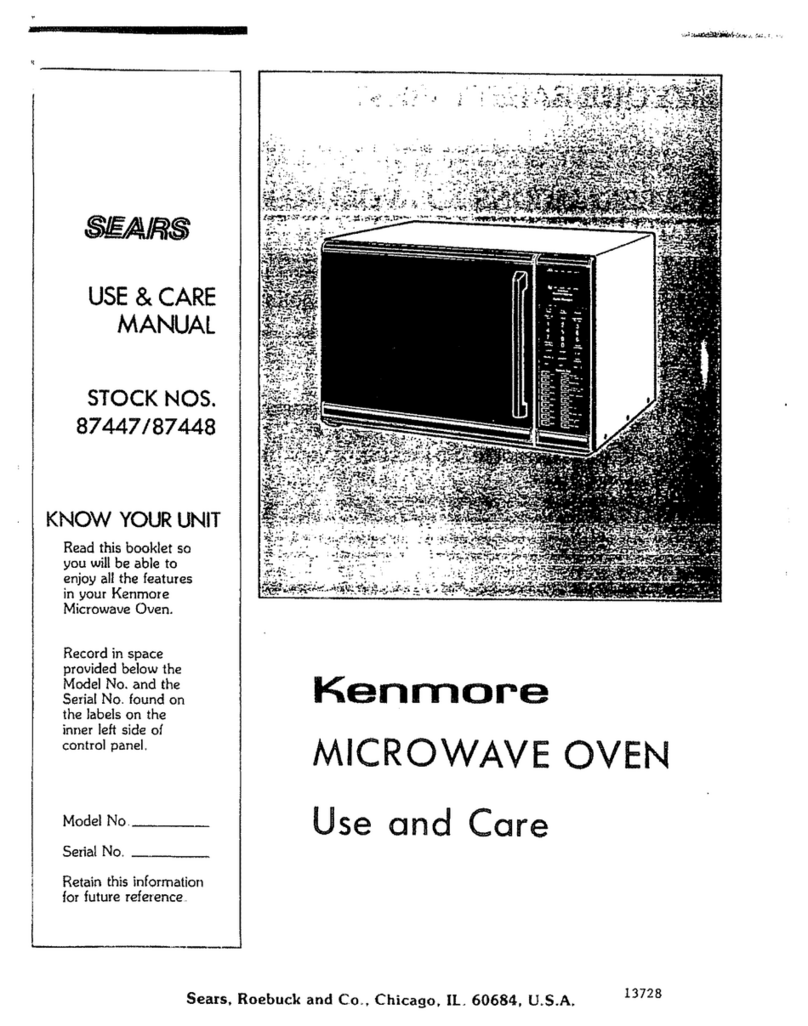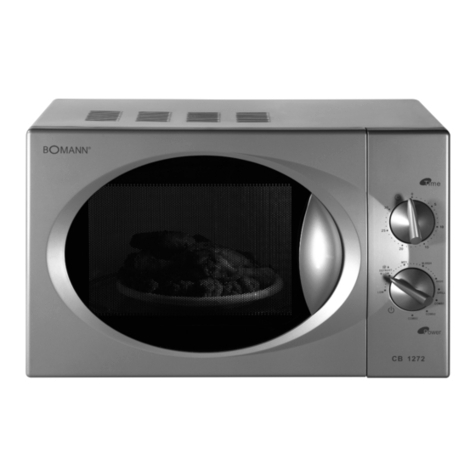5
IMPORTANT SAFETY INSTRUCTIONS
ENGLISH
Keep the power supply cord away from heated
surfaces, including the rear of the oven.
Do not attempt to replace the oven lamp yourself
or allow anyone who is not an electrician
authorised by SHARP to do so. If the oven lamp fails,
please consult your dealer or an authorised SHARP
service agent.
If the power supply cord of this appliance is
damaged, it must be replaced with a special cord.
The exchange must be made by an authorised
SHARP service agent.
To avoid the possibility of explosion and
sudden boiling:
WARNING: Liquids and other foods must
not be heated in sealed containers since
they are liable to explode.
Never use sealed containers. Remove seals and
lids before use. Sealed containers can explode
due to a build up of pressure even after the oven
has been turned off.
Take care when microwaving liquids. Use a wide-
mouthed container to allow bubbles to escape.
Never heat liquids in narrow necked
containers such as baby bottles, as this
may result in the contents erupting from
the container when heated and cause
burns.
To prevent sudden eruption of boiling liquid and
possible scalding:
1. Stir liquid prior to heating/reheating.
2. It is advisable to insert a glass rod or similar utensil
into the liquid whilst reheating.
3. Let liquid stand in the oven at the end of cooking
time to prevent delayed eruptive boiling.
Do not cook eggs in their shells, and whole
hard boiled eggs should not be heated in
microwave ovens since they may explode
even after microwave cooking has ended.
To cook or reheat eggs which have not
been scrambled or mixed, pierce the yolks
and the whites, or the eggs may explode.
Shell and slice hard boiled eggs before
reheating them in the microwave oven.
Pierce the skin of such foods as potatoes, sausages
and fruit before cooking, or they may explode.
To avoid the possibility of burns
Use pot holders or oven gloves when removing food
from the oven to prevent burns.
Always open containers, popcorn makers, oven
cooking bags, etc., away from the face and hands to
avoid steam burns.
To avoid burns, always test food
temperature and stir before serving and
pay special attention to the temperature
of food and drink given to babies,
children or the elderly.
Temperature of the container is not a true
indication of the temperature of the food or drink;
always check the food temperature.
Always stand back from the oven door when opening
it to avoid burns from escaping steam and heat.
Slice stuffed baked foods after heating to release
steam and avoid burns.
Keep children away from the door to prevent them
burning themselves.
To avoid misuse by children
WARNING: Only allow children to use
the oven without supervision when
adequate instructions have been given
so that the child is able to use the oven
in a safe way and understands the
hazards of improper use.
Do not lean or swing on the oven door. Do not
play with the oven or use it as a toy.
Children should be taught all important safety
instructions: use of pot holders, careful removal of
food coverings; paying special attention to
packaging (e.g. self-heating materials) designed to
make food crisp, as they may be extra hot.
Other warnings
Never modify the oven in any way.
Do not move the oven while it is in operation.
This oven is for home food preparation only and
may only be used for cooking food. It is not
suitable for commercial or laboratory use.
To promote trouble-free use of your oven
and avoid damage.
Never operate the oven when it is empty.
When using a browning dish or self-heating
material, always place a heat-resistant insulator
such as a porcelain plate under it to prevent
damage to the turntable and roller stay due to heat
stress. The preheating time specified in the dishes
instructions must not be exceeded.
Do not use metal utensils, which reflect microwaves
and may cause electrical arcing. Do not put cans
in the oven.
Use only the turntable and the roller stay designed
for this oven.
To prevent the turntable from breaking:
(a)Before cleaning the turntable with water, leave
the turntable to cool.
(b) Do not put hot foods or hot utensils on a cold turntable.
(c) Do not put cold foods or cold utensils on a hot turntable.
Do not place anything on the outer cabinet during
operation.
